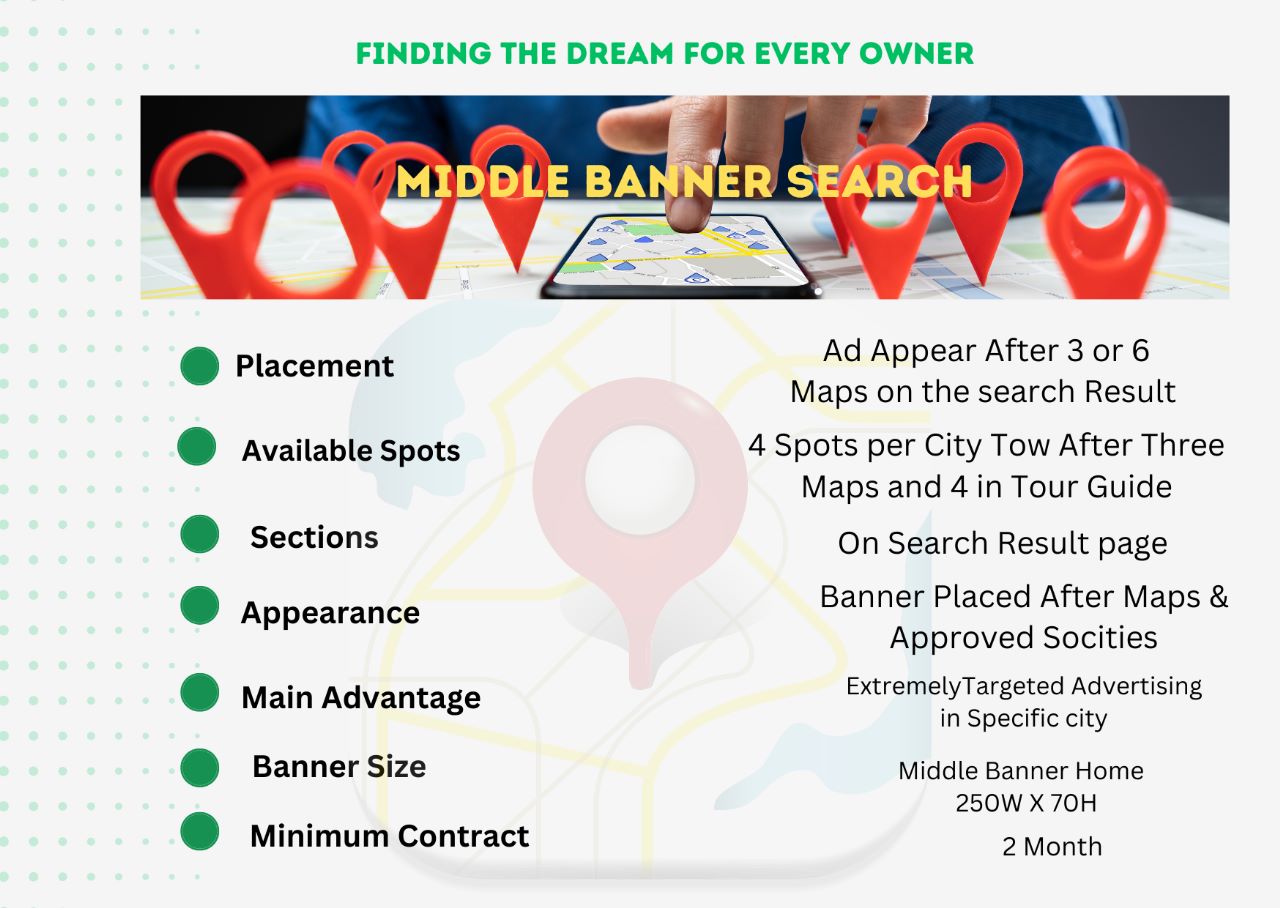Middle Search Advertisement Banner, Enhance Your Visibility
Boost your online presence with our middle search advertisement banners. Discover how strategic banner placement can enhance your visibility and engagement. Learn more about effective advertising solutions tailored to your needs.
Here's a breakdown of its features and significance:
1. Placement:As the name suggests, the Middle Banner is strategically placed within the middle portion of a webpage's content. This positioning aims to capture the reader's attention as they scroll through the page, without being too intrusive or disruptive to the overall user experience.
2. Format:The Middle Banner is usually a rectangular or square-shaped graphical element that contains an advertisement. It can consist of a combination of text, images, and sometimes interactive elements like buttons or forms.
3. Contextual Relevance:Middle Banners are often designed to be contextually relevant to the surrounding content. Advertisers aim to align their ad content with the interests or topics of the page's main content, increasing the chances of attracting the right audience.
4. Ad Type:Middle Banners can be used for various types of advertisements, including product promotions, brand awareness campaigns, lead generation, and more. The content within the banner might include a headline, a short description, an image, and a call-to-action (CTA).
5. Click-Through:When users find the Middle Banner appealing or relevant, they can click on it to be redirected to the advertiser's landing page or website. The click-through rate (CTR) is a metric used to measure the effectiveness of these banners in driving user engagement.
6. User Experience:A well-designed Middle Banner should blend seamlessly with the overall design of the webpage to avoid being disruptive or annoying to users. If the banner is obtrusive or irrelevant, it could negatively impact the user experience and lead to higher bounce rates.
7. Responsive Design:With the prevalence of mobile devices, it's important that Middle Banners are responsive and adapt to different screen sizes. A banner that looks great on a desktop monitor should also be visually appealing and functional on smaller screens.
8. A/B Testing:Advertisers often conduct A/B testing with different versions of Middle Banners to determine which design, content, and placement generate the best results. This involves creating multiple variations and measuring metrics like CTR and conversion rates to optimize campaign performance.
9. Analytics:Advertisers track the performance of Middle Banners using analytics tools. They monitor metrics such as impressions, clicks, conversions, and ROI to assess the effectiveness of their advertising efforts.
In summary, a Middle Banner Search Advertisement Banner is a type of online ad format that appears within the middle section of a webpage's content. It's designed to be contextually relevant, visually appealing, and strategically placed to capture user attention without disrupting the browsing experience. Advertisers use analytics and testing to optimize the performance of these banners in driving user engagement and achieving their advertising goals.
(FAQs)
1: What is a Middle Banner Search Advertisement Banner?A Middle Banner Search Advertisement Banner is an online advertising format placed within the middle section of a webpage's content. It typically contains a combination of text, images, and sometimes interactive elements. This type of banner aims to capture user attention while they scroll through the page's content.
2: How does a Middle Banner differ from other types of online ads?Unlike traditional banner ads that often appear at the top or sides of a webpage, the Middle Banner is strategically placed within the middle content section. It aims to provide a less intrusive and more contextually relevant advertising experience that seamlessly integrates with the surrounding content.
3: Why is contextual relevance important for Middle Banners?Contextual relevance ensures that the content of the Middle Banner aligns with the interests and topics of the surrounding webpage content. When the banner content is relevant, users are more likely to engage with it, resulting in higher click-through rates and a better overall user experience.
4: How can I optimize the performance of a Middle Banner Search Advertisement Banner?To optimize performance, consider these tips: Design visually appealing banners that match the overall webpage aesthetics. Craft compelling headlines and descriptions that clearly convey the value of the advertised product or service. Include a strong call-to-action (CTA) that prompts users to take a specific action, such as clicking the banner. Conduct A/B testing with different versions of the banner to identify the most effective design, content, and placement.Monitor analytics metrics like impressions, clicks, conversions, and ROI to measure success and make necessary adjustments.
5: How can I ensure my Middle Banner looks good on different devices?Ensuring a good user experience across various devices is essential. Follow these best practices: Implement responsive design techniques to make sure the banner adapts to different screen sizes and orientations. Use high-quality images that scale well without losing clarity on smaller screens.Test the banner on different devices, such as desktops, tablets, and smartphones, to ensure it appears and functions as intended.
Remember that the effectiveness of a Middle Banner Search Advertisement Banner depends on various factors, including its design, relevance, placement, and the audience's preferences. Regularly analyzing performance and making improvements based on insights will help you achieve better results from your advertising efforts.

